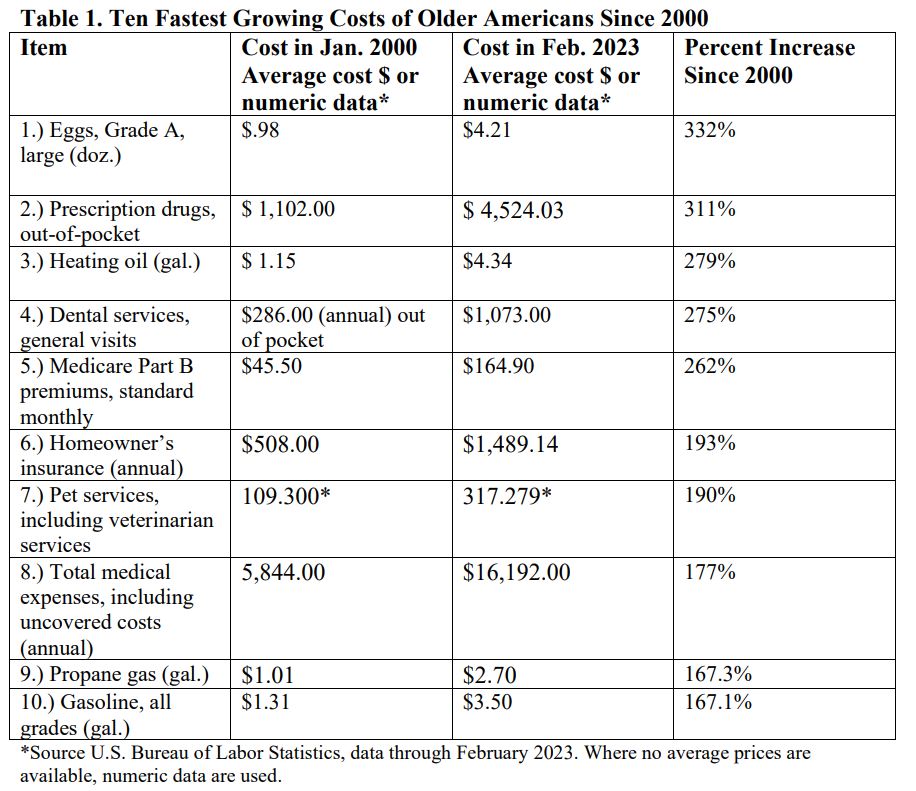An analysis of Social Security “cost of living adjustments” (COLAs) compared to the actual costs of goods and services purchased by older Americans found that Social Security benefits have lost 36 percent of their buying power since 2000. That’s according to a study released this month by The Senior Citizens League (TSCL).
To put it in perspective, for every $100 a retired household spent on groceries in 2000, that household can only buy about $64 worth today. While this is an improvement from one year ago – when TSCL estimated that Social Security benefits had lost 40 percent of buying power over the same period – it’s still a significant number.
Between January 2000 and February 2023, Social Security COLAs increased benefits by 78 percent, averaging 3.4 percent annually. But the cost of goods and services purchased by typical retirees rose by 141.4 percent, averaging about 6.2 percent annually.
The TSCL is projecting the 2024 COLA to be around 3.1 percent. Below is a chart that shows the ten fastest-growing costs for items/services incurred by older Americans.

